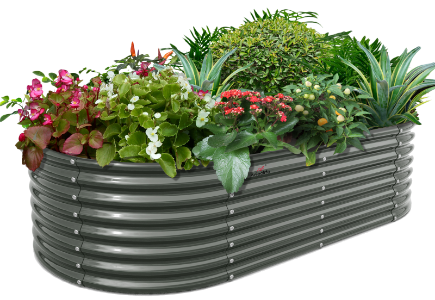When it comes to cultivating a thriving outdoor garden, the significance of high-quality plant housing cannot be overstated. Whether you're a seasoned gardener or a novice green thumb, understanding the role of durable and effective plant housing is crucial for the health and longevity of your plants. This article delves into the importance of high-quality plant housing for outdoor gardens, offering insights and practical examples to help you create an optimal growing environment.

Protecting Plants from Harsh Weather Conditions
One of the primary reasons for investing in high-quality plant housing is to shield your plants from adverse weather conditions. Outdoor gardens are exposed to a variety of elements, including heavy rain, strong winds, and intense sunlight. Robust plant housing, such as well-constructed greenhouses or sturdy plant covers, can provide a protective barrier against these elements, ensuring that your plants remain healthy and undamaged.
For instance, during a sudden hailstorm, a high-quality greenhouse can prevent your delicate flowers and vegetables from being battered and bruised. Similarly, during a heatwave, shade cloths can mitigate the scorching effects of the sun, preventing leaf burn and dehydration.
Enhancing Plant Growth and Yield
Another critical aspect of high-quality plant housing is its ability to enhance plant growth and yield. By creating a controlled environment, you can optimize conditions such as temperature, humidity, and light exposure, which are essential for plant development. This controlled environment can lead to healthier plants and, consequently, a more bountiful harvest.
For example, using a greenhouse equipped with ventilation systems and grow lights allows you to extend the growing season, giving your plants more time to mature and produce fruit. This is particularly beneficial for gardeners in regions with shorter growing seasons.
Preventing Pests and Diseases
Pests and diseases are common challenges that outdoor gardeners face. High-quality plant housing can serve as a formidable defense against these threats. Enclosed structures like greenhouses and cold frames can keep out insects, rodents, and other pests that can wreak havoc on your garden. Additionally, these structures can reduce the spread of diseases by limiting the exposure of plants to contaminated soil and water.
For instance, a greenhouse with fine mesh screens can prevent aphids and other small insects from entering and infesting your plants. Moreover, by controlling the environment within the housing, you can reduce the humidity levels that often contribute to fungal diseases.
Conserving Resources and Promoting Sustainability
High-quality plant housing also plays a vital role in conserving resources and promoting sustainable gardening practices. By creating an efficient growing environment, you can reduce water usage, minimize the need for chemical pesticides, and lower energy consumption.
For example, a well-designed greenhouse can capture and recycle rainwater, reducing the need for supplemental irrigation. Additionally, by using natural pest control methods within an enclosed space, you can decrease your reliance on harmful chemicals, promoting a healthier ecosystem.
Conclusion
The importance of high-quality plant housing for outdoor gardens extends beyond mere aesthetics. It encompasses protection from harsh weather, enhancement of plant growth, prevention of pests and diseases, and conservation of resources. By investing in durable and effective plant housing, you can create a thriving garden that not only brings joy and beauty but also contributes to a sustainable and eco-friendly environment. Whether you're growing vegetables, flowers, or herbs, the right plant housing can make all the difference in achieving a successful and rewarding gardening experience.













